Ask a coach: ‘Will I see much benefit from using branded sports nutrition products – or will any carbs do?’
Coach James Spragg take us through what the body really needs and where’s best to get it
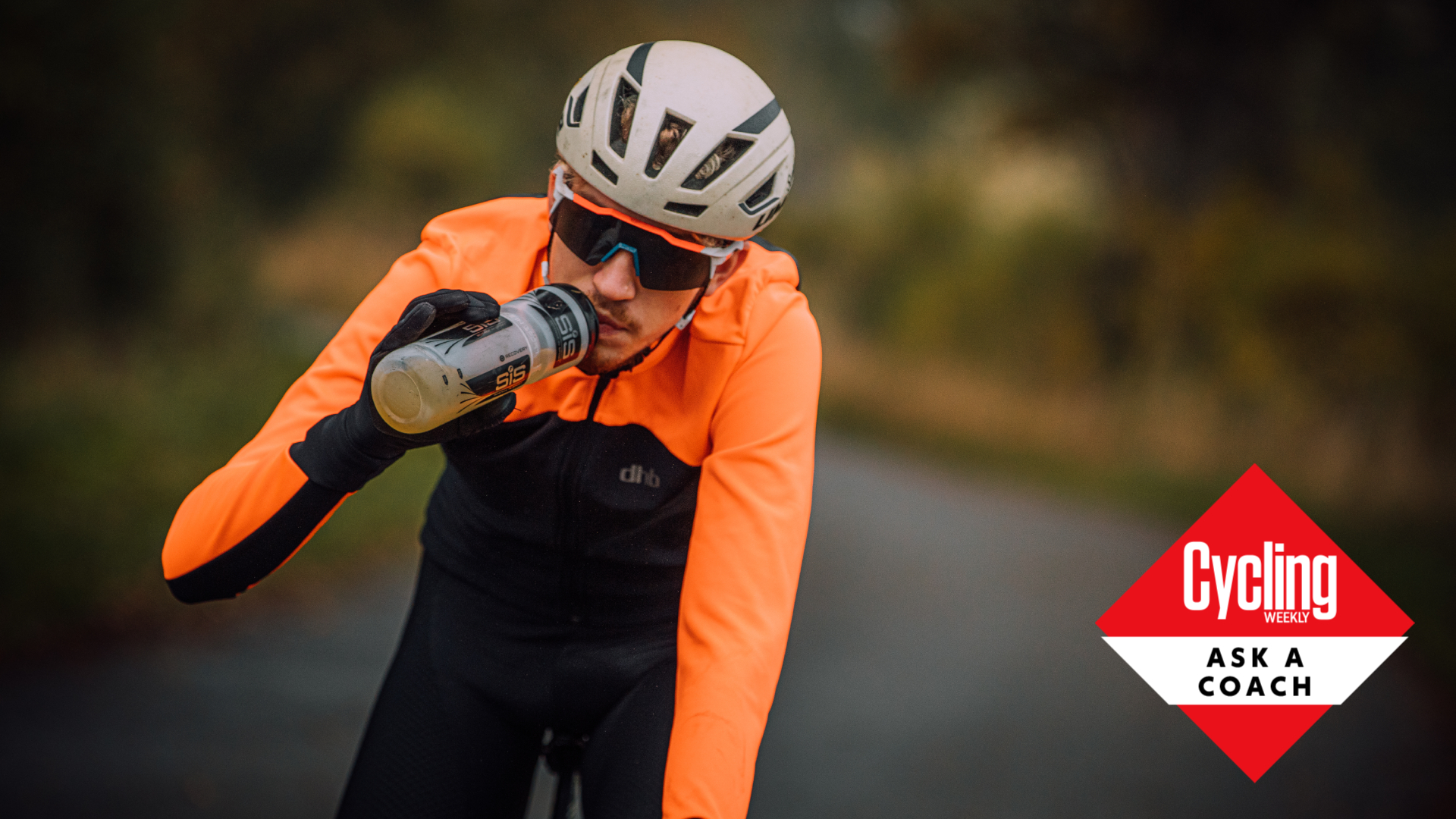

By now, we are all aware of the benefits of fuelling properly when on the bike.
When we exercise we use the fat and carbohydrate (glycogen) stored in our body. While even the leanest pro athlete has more than enough fat stores for a training session, we all only have limited glycogen stores.
Glycogen is stored in the liver and the muscles as it is transported in the blood as glucose. While we have all probably experienced the dreaded ‘bonk’ when our liver glycogen stores are so low that blood sugar drops; even mild glycogen depletion can lead to a significant reduction in performance.

Sports scientist and coach James Spragg is one of the experts who will be answering your questions in Cycling Weekly's ASK A CYCLING COACH series which comes out every Wednesday. Working both in research and applied settings, he currently runs Intercept Performance Consultancy.
It’s for this reason that whenever I work with an athlete, I will prescribe their training and the fuelling during and after each session. This ensures that the macronutrient intake matches the demands of that particular training session. This approach to cycling nutrition has recently become known as ‘fuelling for the work required’.
The question then becomes – what is really ‘required’ during training sessions?
As a (very) rough guide we can break down sessions in cycling training plans into three categories: Easy rides, long endurance rides, and intensive sessions. Each of these sessions has a different carbohydrate requirement.
What cycling nutrition is required?
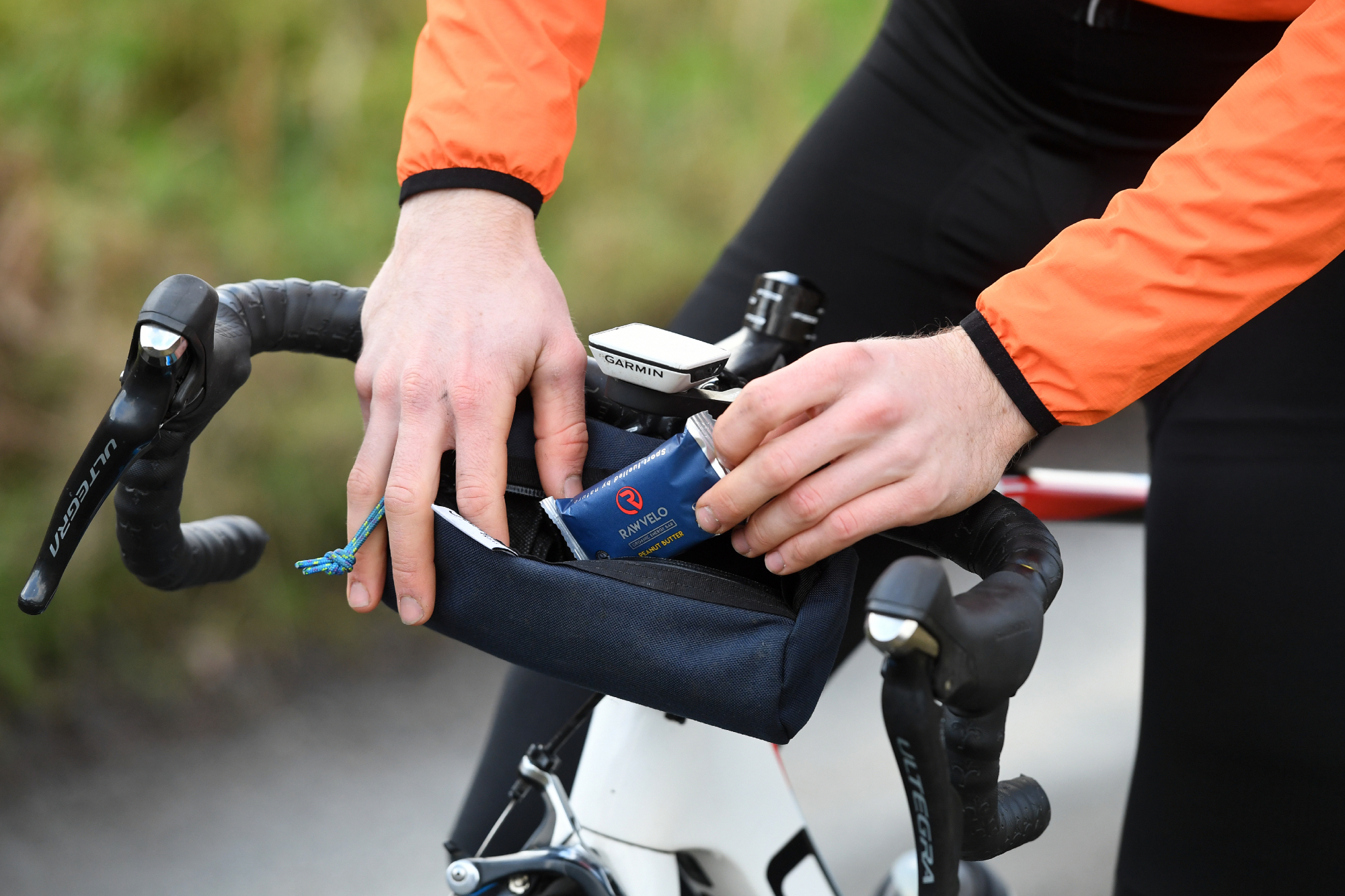
Easy rides
Get The Leadout Newsletter
The latest race content, interviews, features, reviews and expert buying guides, direct to your inbox!
These rides are short (<90 mins) and very easy. Typically, so long as you are fuelled before these rides, they don’t require additional carbohydrate intake during the session. However, if you are doing them the day after a race where you might still be a little glycogen depleted it certainly won’t do any harm to take in some carbs.
Endurance rides
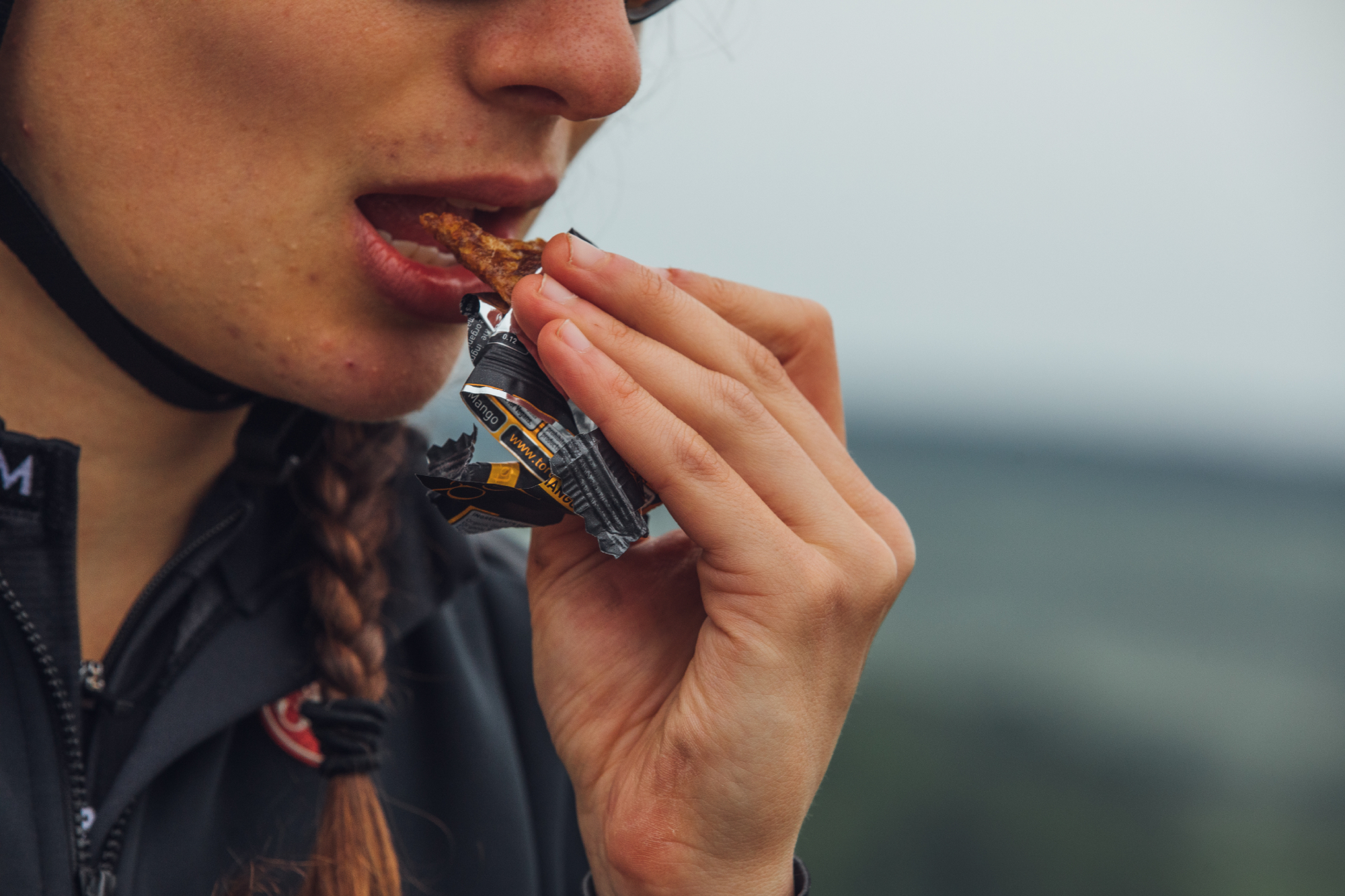
These Zone 2 endurance rides are longer (>90mins) but still fairly easy (if you are doing them properly). However, due to their duration, you will still be using a significant amount of glycogen during a ride and thus it’s sensible to be taking in some carbs as you ride. At typical endurance intensities, 40-60g of carbs per hour is sufficient.
Intensive rides
These can be anywhere from short hard HIIT workouts to long hard races. In those shorter sessions, (<60-90mins) aggressive carbohydrate intake is not recommended as the body won’t be able to process the carbohydrates quickly enough for them to be burned. By the time they have gone through the digestive system, into the blood, and then either to the muscle or the liver, you’ll likely be onto your cool down.
However, in long hard sessions (>90mins) you are going to need to take in a lot of carbohydrates if you don’t want to run out of glycogen and see a drop in your performance.
In this case, you will need to be taking in more than 60g/hr. In fact, some professional athletes are now eating 90-120g/hr of carbohydrates.
Where should these carbs come from?
Now we know how much to eat, the next question is, where should those carbs come from?
Should you be only using (sometimes very expensive) sports nutrition in the form of the best energy drinks, gels or bars, or does any old carbohydrate do?
Endurance rides
Below an intake of 60g/hr I would argue that it doesn’t really matter where your carbs come from. The reason for this is that different types of sugars are absorbed through different channels in the gut.
The glucose channel (by far the most common carbohydrate) can get ~60g of glucose out of the gut and into the bloodstream per hour. Indeed, in scientific experiences, at these sorts of intensities, feeding cyclists potato-based products resulted in the same level of performance as specialist sports nutrition. Considering this is where most of your training will take place – I would recommend finding a product you like, checking how many carbs it contains and then eating enough of it to reach your 40-60g / hour.
Intense rides
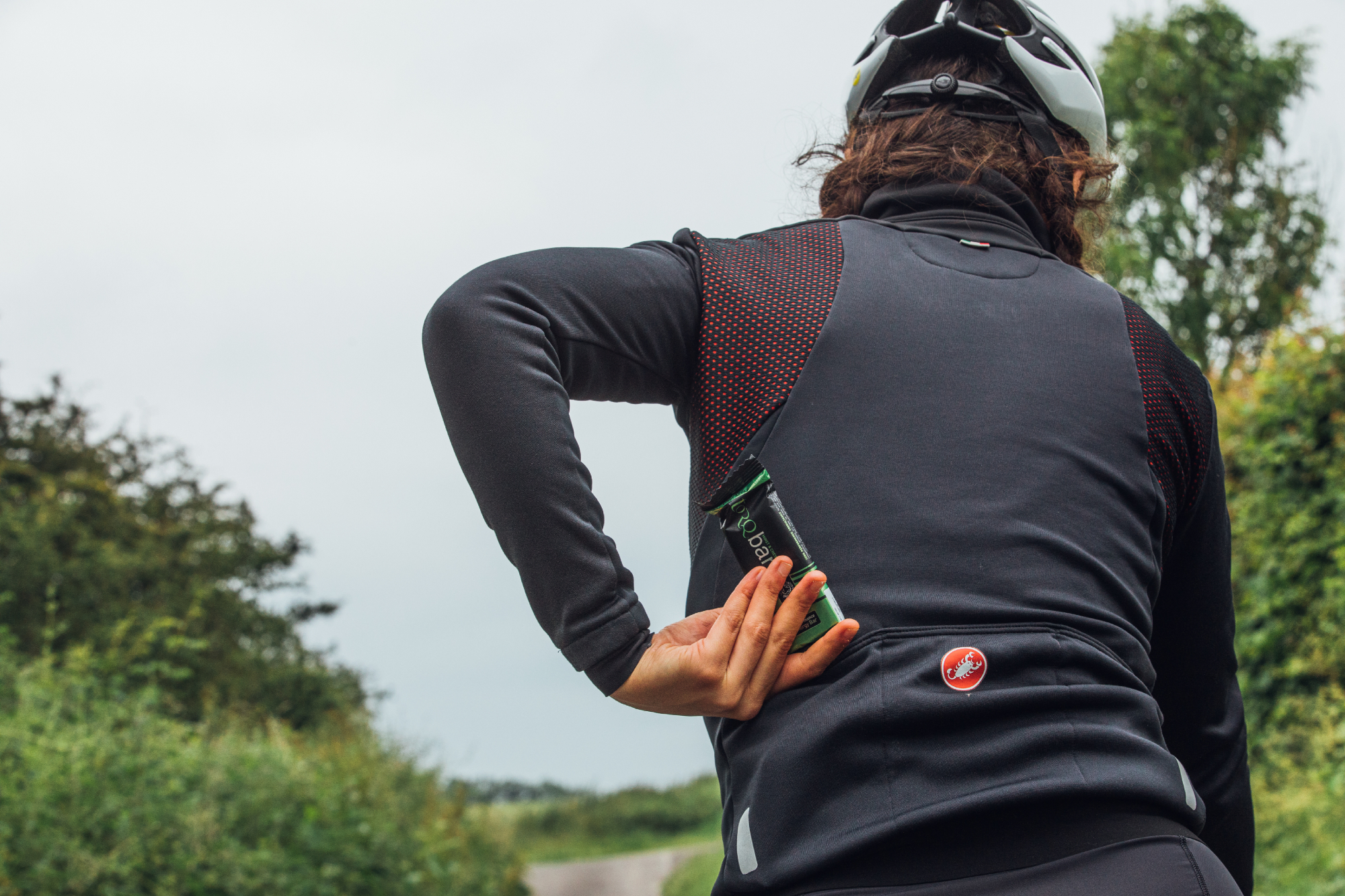
This is where things get a little complex. Our gut cannot process enough of one type of sugar to meet the ~90g/hr needed to fuel the session. Therefore, we need a combination of sugars. The latest research suggests that a 1:08 ratio of glucose and fructose results in the best carbohydrate uptake and the biggest improvements in performance. This ratio is only really found in specific sports nutrition products. Therefore, for these sessions, I would certainly recommend specific products.
We know also know that before the gut can process 90g/hr of carbs it actually needs some training. Therefore, it’s important that you don’t just suddenly gobble down 90g/hr in the first intensive session or race and expect your stomach to handle it. Instead, you need to progressively increase the amount of carbohydrates per hour, starting at ~60g/hr and getting up to 90g/hr (or even higher in some cases).
Likewise, as all sports nutrition products contain a slightly different mix of ingredients, you cannot expect your gut to be able to just process any old product and all be fine. Doing so is a recipe for ‘gastric-distress’... Instead, it’s far better to pick a product you like the taste of and stick with it. Slowly up your carb intake in intensive sessions until you are at ~90g/hr or your stomach can’t handle any more.
The verdict?
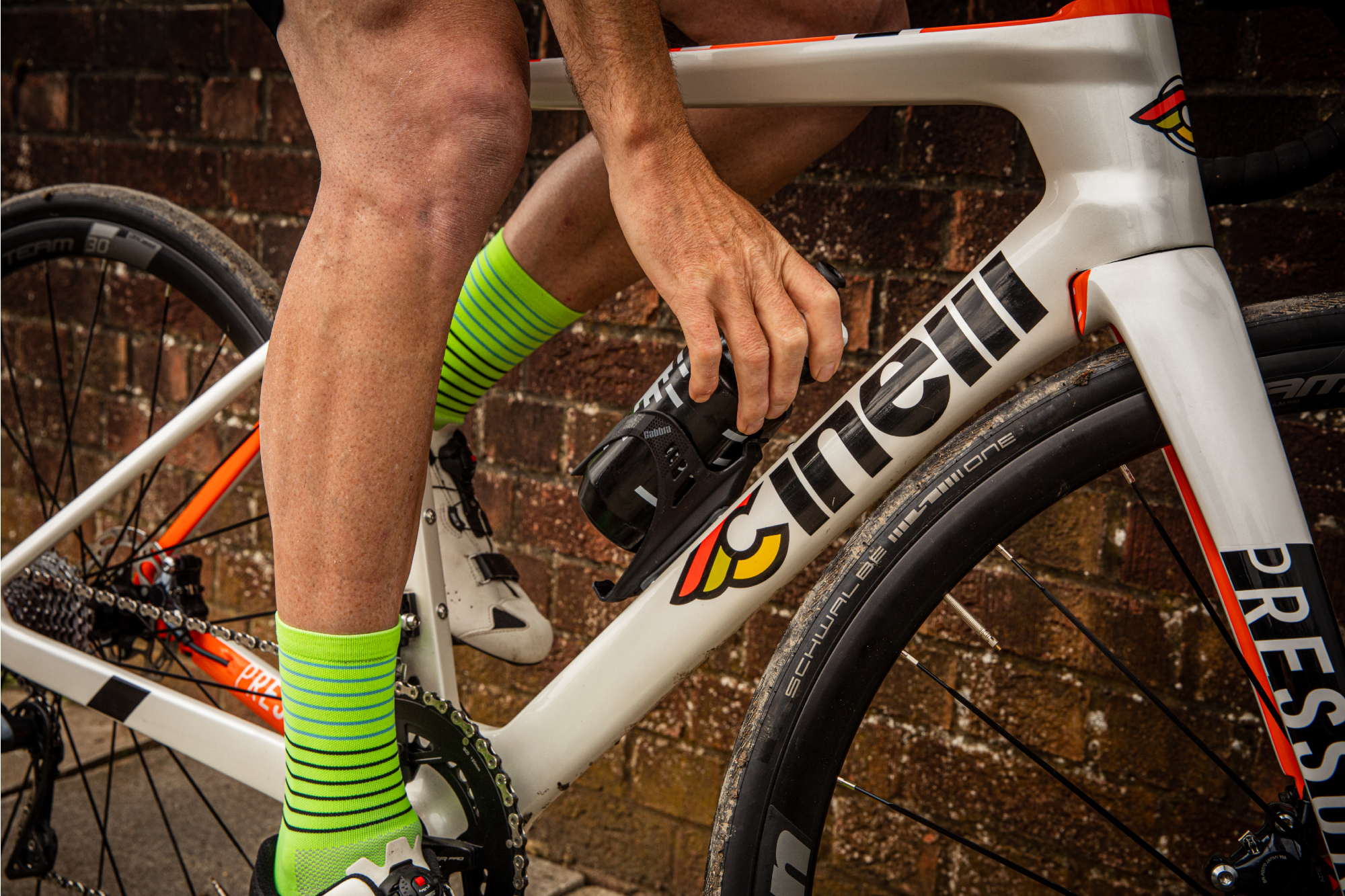
In easy rides, a bit of carbohydrate is fine and won’t do any harm. In endurance rides, you need to be fuelling at 40-60g of carbs an hour but you can get those carbs from wherever you want. For intense sessions (especially those >60mins), I would recommend finding a product you like the taste of, that contains a mix of sugars (ideally glucose and fructose in a 1:0.8 ratio), and using it for all sessions. Not only will this mean you are optimizing on the bike performance, but you will also be training your gut to handle the high carbohydrate intake. This means no nasty surprises on race day.
With food prices soaring, it’s getting ever more expensive to sate a cyclist’s appetite. Here’s a nutritionists’ guide on how to get your nutrition for less.
In this age of online training plans and workouts, do you ever find yourself with a burning question you’d like to directly ask a cycling coach? Well, now is your chance to ask away! In this series, we’ll be putting your questions to expert coaches – send them in to Cycling Weekly's Fitness Features Editor at anna.abram@futurenet.com.

Thank you for reading 20 articles this month* Join now for unlimited access
Enjoy your first month for just £1 / $1 / €1
*Read 5 free articles per month without a subscription

Join now for unlimited access
Try first month for just £1 / $1 / €1
James Spragg is a sports scientist and coach, working both in research and applied settings. When not working with athletes James can be found skiing, climbing, cycling or drinking coffee!
Alongside Dan Lorang and Peter Leo, James runs Intercept Performance Consultancy. Over the last 8 years in various roles, as coaches, performance consultants, performance managers, and sports scientists, Dan, James and Peter have played a role in helping athletes achieve more than 10 World Championship titles, several Olympics medals (including a Gold and Silver Medal in Tokyo 2020) and several Top 5 results in some of the biggest sporting events on the planet (Tour de France, Olympics, World and European Championships). Our single focus is on improving performance in all settings.
-
 'This is the marriage venue, no?': how one rider ran the whole gamut of hallucinations in a single race
'This is the marriage venue, no?': how one rider ran the whole gamut of hallucinations in a single raceKabir Rachure's first RAAM was a crazy experience in more ways than one, he tells Cycling Weekly's Going Long podcast
By James Shrubsall
-
 Full Tour of Britain Women route announced, taking place from North Yorkshire to Glasgow
Full Tour of Britain Women route announced, taking place from North Yorkshire to GlasgowBritish Cycling's Women's WorldTour four-stage race will take place in northern England and Scotland
By Tom Thewlis